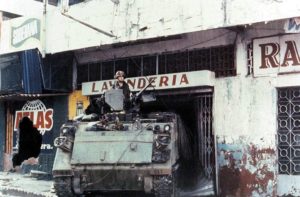The post-Cold War era was a time of missed opportunities. On December 8, 1988, Soviet leader Mikhail Gorbachev presented a challenge to the world community to create a new world order based on cooperation rather than domination. “ The formula for development at another’s expense is becoming outdated,” he told the United Nations General Assembly. “It is evident, for example, that force and the threat of force can no longer be, and should not be instruments of foreign policy.” To the surprise of many, the Soviet Union followed through and allowed the communist governments of Eastern Europe to fall as nonviolent revolutions swept through the region.
In December 1989, President George H. W. Bush met with Gorbachev in Malta. Bush seemed upbeat after the meeting, telling reporters, “The arms race, mistrust, psychological and ideological struggle, all those should be things of the past.” That was a good start for remaking the world order. Yet Bush and his foreign policy team were not interested in limiting U.S. power and influence in the world; quite the opposite. Less than three weeks after the Malta summit, U.S. forces invaded Panama in a classic “gunboat diplomacy” maneuver, denounced by the UN General Assembly as a “flagrant violation of international law.”
Rhetoric notwithstanding, the U.S. foreign policy establishment viewed Moscow’s retreat from great power domination as an opportunity to advance U.S. interests and establish the U.S. as the sole superpower in the world.
The new essay on the U.S. Foreign Policy History & Resource Guide website, The post-Cold War era, 1989-2001, examines the choices made by U.S. leaders in this crucial period of change. It critiques official rationales, assesses policy results, and probes lessons that have been and still might be drawn. The essay covers the U.S. invasion of Panama in December 1989, the Persian Gulf War in early 1991, “humanitarian interventions” in Somalia, Bosnia, and elsewhere, and the failed American crusade to remake Russia.

Mikhail Gorbachev’s vision of a more cooperative and peaceful world order gradually receded from view during the post-Cold War period. In its place, U.S. leaders advanced the idea of an American-led world order secured by U.S. military predominance. Those who hoped for a “peace dividend” at the end of the Cold War – a transfer of funds from military to domestic programs – were sorely disappointed as new threats from abroad were found to replace the vanishing “communist threat.” As for Russia, capitalist “shock therapy” produced mostly shock and little therapy as social welfare systems were eviscerated and poverty rose precipitously. All in all, notes the Norwegian historian Odd Arne Westad, “the 1990s was a lost opportunity for international cooperation, particularly to combat disease, poverty and inequality.”
What might the world be like today if different choices had been made in the post-Cold War era? What if U.S. leaders had accepted the challenge to build a more cooperative international neighborhood rather than seek predominant military power and influence? Might the “peace dividend” have been realized, enabling governments to more competently address environmental threats, pressing economic needs, and epidemic diseases? Though the opportunity was missed in the 1990s, the future is still open to this healing possibility.
The U.S. Foreign Policy History & Resource Guide is an open resource, non-commercial website sponsored by the Historians for Peace and Democracy and the Peace History Society.
